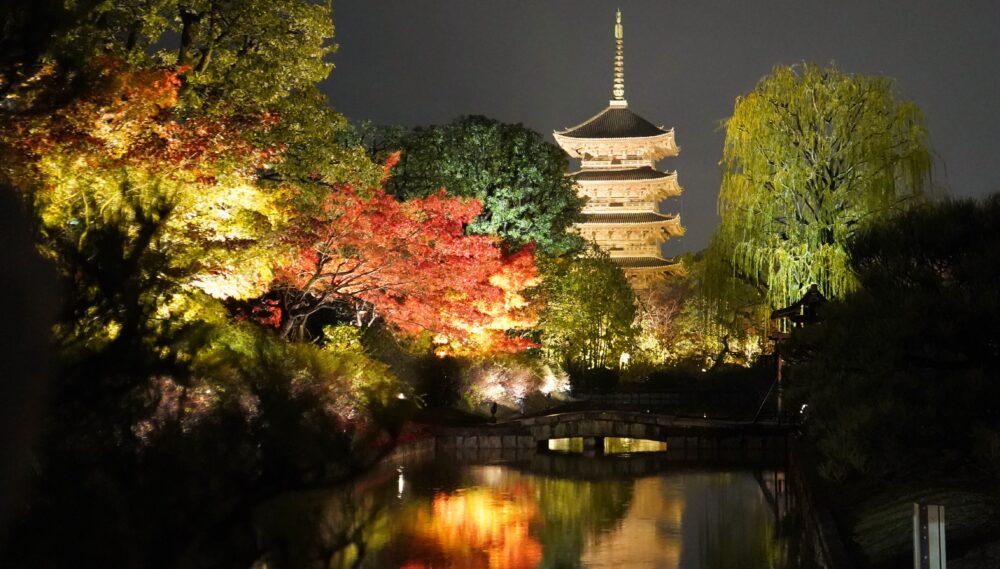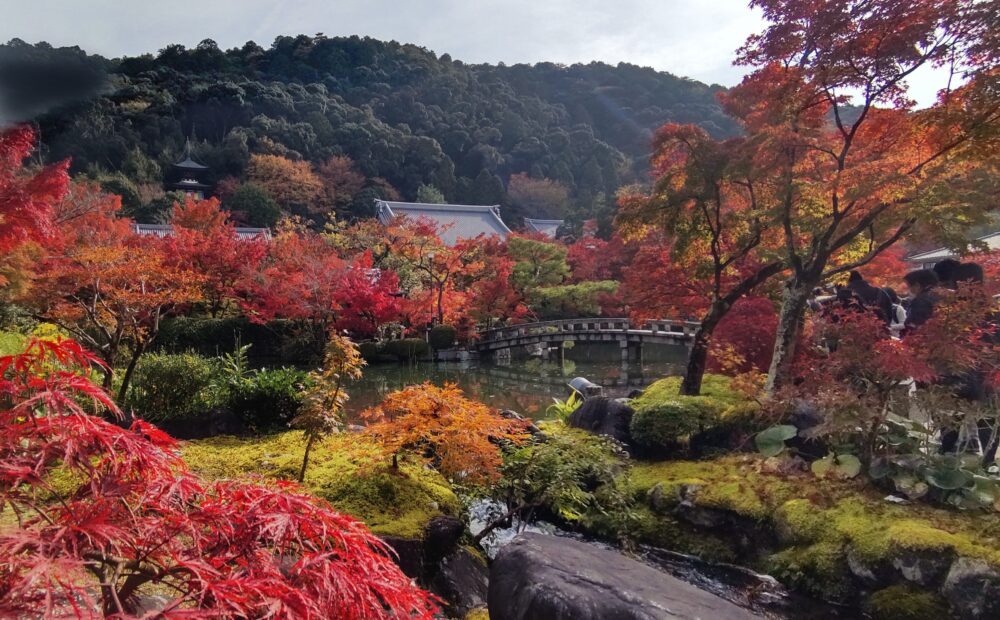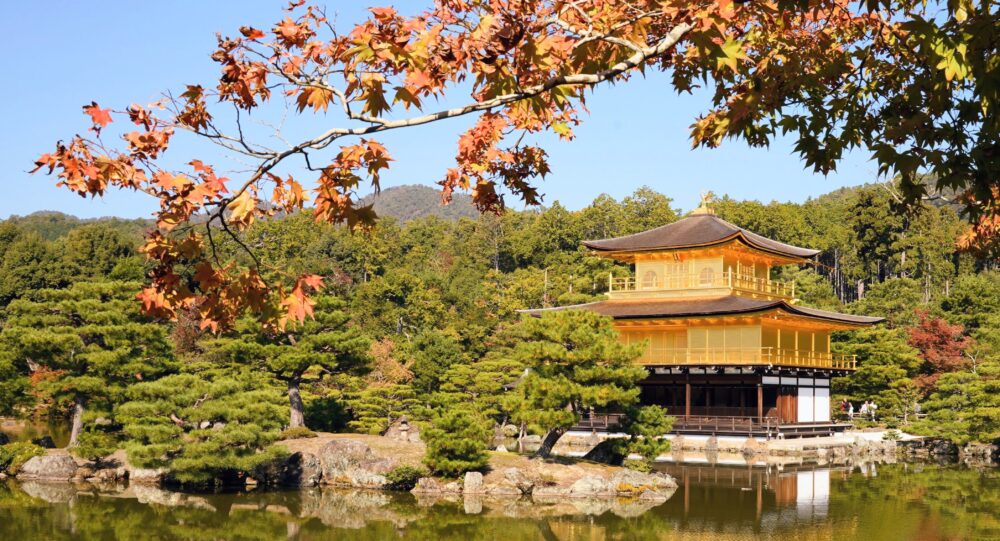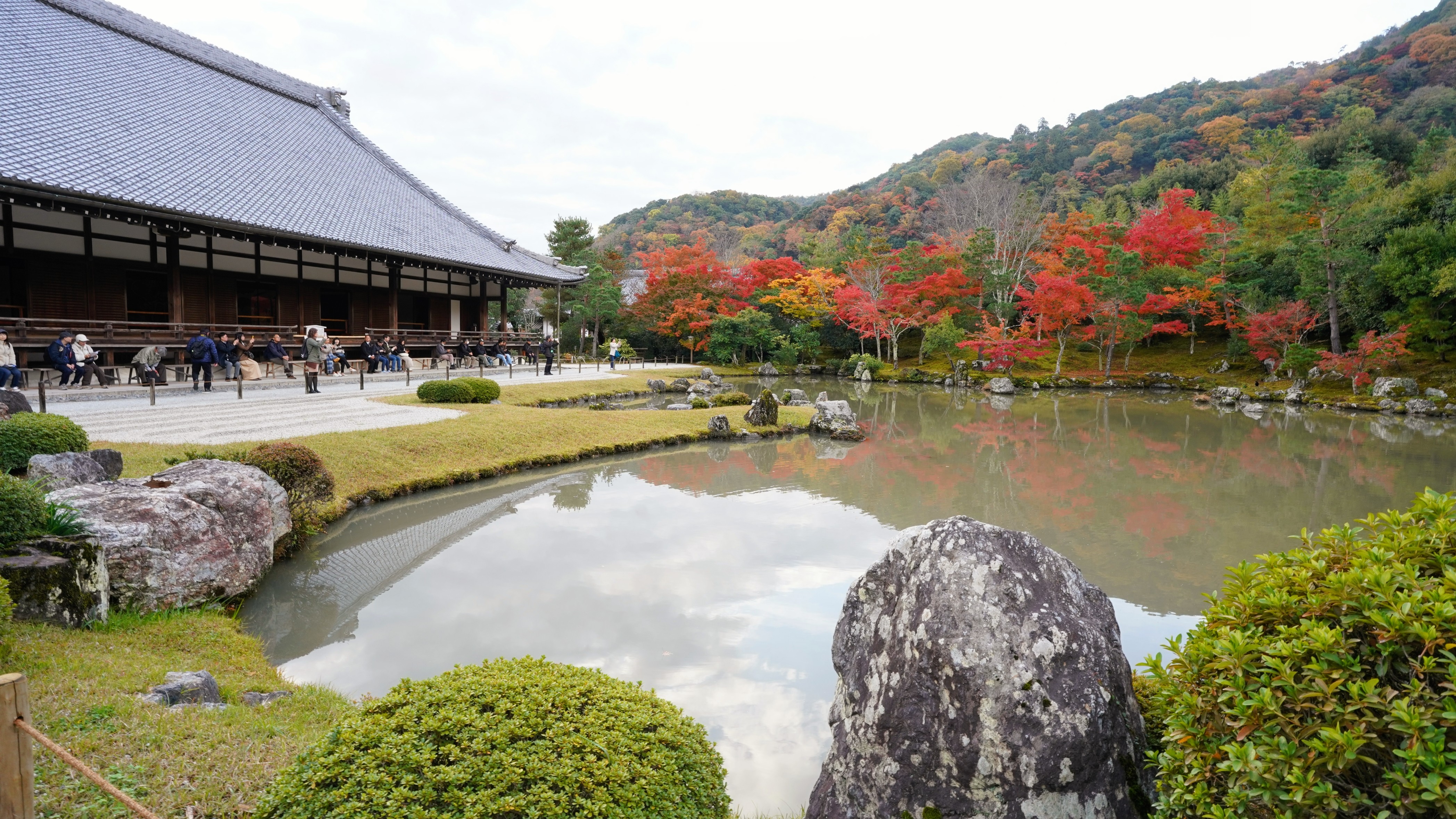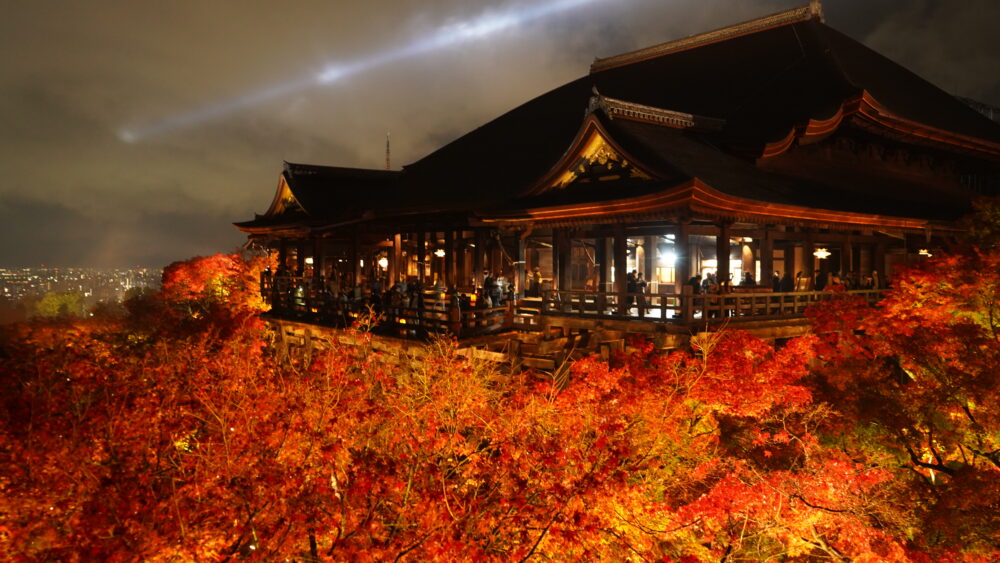Ginkaku-ji(Silver Pavilion) and garden | the Best time to visit in 2025
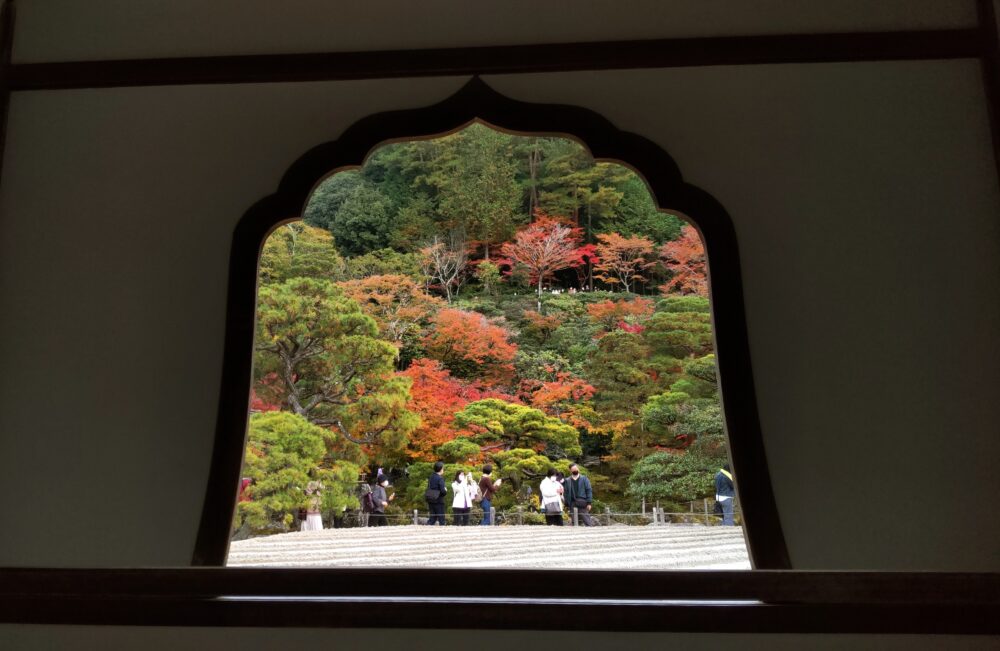
In Kyoto, there are many temples that are famous for autumn foliage, but one of the most iconic among them is Ginkaku-ji(Higashiyama Jisho-ji). Ginkaku-ji is a historical zen temple, located in the east Kyoto city at the foot of Higashi mountain. Ashikaga Yoshimasa built this temple which was a traditional style of Japanese residential architecture in 1482, known as the silver pavilion contrasted with the golden pavilion in the northern Kyoto city.
Although It is like a hidden gem behind a tall hedge-wall along the mountain, Many travelers are attracted and visit for the beautiful pavilion and garden.
Here is information about the best seasons and time to visit Ginkaku-ji.
Best season
Fall season
The Best time to visit Ginkaku-ji is from middle to late fall season when the peak foliage dates was 4th week of November and 1st week of December in 2024, and is expected to be around the same time in 2025. There are Japanese maple trees around the pond which the circling path are along. The Maple leaves change a vivid gradient color from yellow to red, depending on the quantity of daylight and the lowest temperature at night. On the ground, the several types of moss, regularly watered planted for a maintenance, are used as ground cover plants with an attractive emerald green color. The landscape architectures which are combined with Ginkaku-ji (the Silver Pavilion), authentic pond garden, bright red fall leaves and attractive green mosses looks extra beautiful and magical.
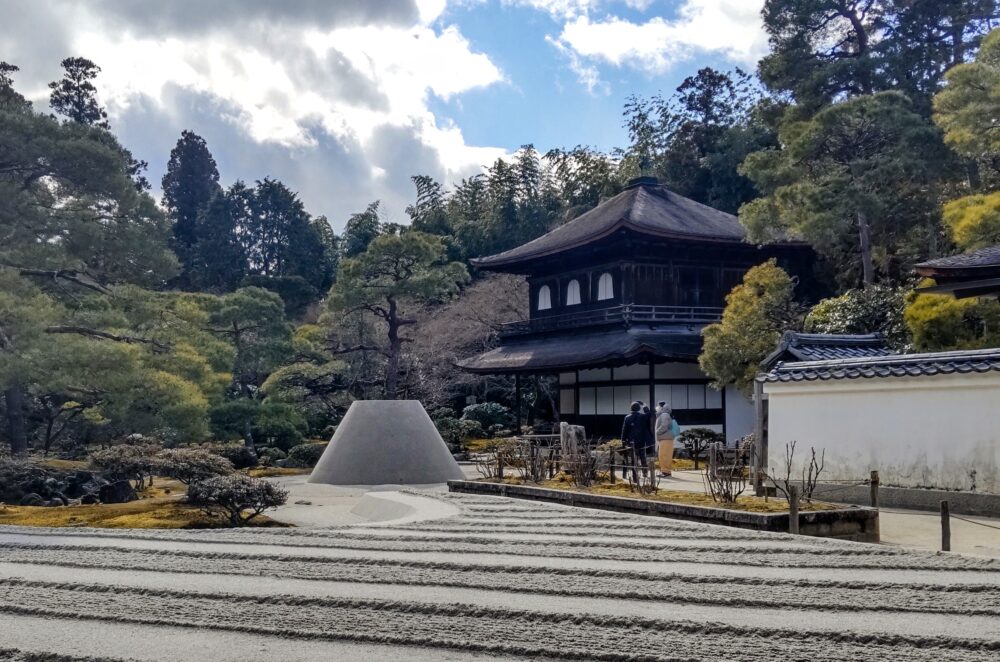
The designer created the garden with multiple spots to show us great views. The Japanese dry garden, which is made of sand to represent Zen Buddhism spirits, is behind the pond garden. Two types of simple sand sculptures: one is “Kogetudai” representing Mt. Fuji and the other is ”Ginshyadan” representing an agitated sea. Those sand arts are designed in harmony with Ginkaku-ji temple and garden.

The Hondo(Main hall), built on the opposite side of Ginkaku-ji in garden, has lancet-arch window “Katomado” which were designed like lotus of buddhist symbol. The view through the window whose frame looks like picture is literally picturesque.
There are the hidden path up hill behind garden. The lookout point with views over eastern Kyoto city is spectacular, especially fall season.
If you want to decide on the date to visit in fall foliage, this forecast site can help.
Fall foliage forecast site
Spring season
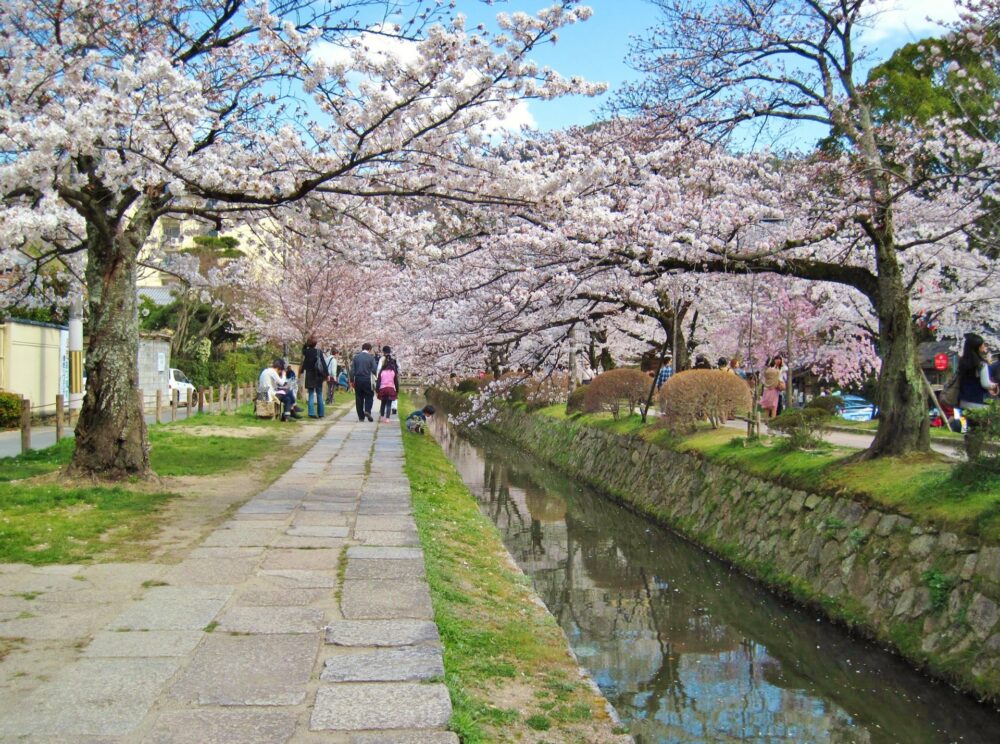
Spring season is also great to see flowering trees. The riverside path ”Tetugaku No Michi” from Ginkaku-ji to Nanzen-ji is known cherry blossom street. The type of cherry trees is “Somei Yoshino”, producing pink bouquet flowers before the leaves appear. The rows of cherry blossom are gorgeous and many travelers walk though this path to visit temples. However, cherry trees are known for short bloom: Somei Yoshino bloomed from March 28th to April 6th, 2024 in Kyoto city.
If you want to decide on the date to visit in cherry blossom season, cherry this forecast site can help.
Cherry Blossom Forecast site
At the same time in Ginkaku-ji garden, the Maule’s quinces, which are shrubs with tangle of thorn branches, blooms beautifully in hue of red.
The peonies are beautiful in bloom with the large and fragrant flowers on flower beds beside the sand sculptures from Mid April to early May. Ginkaku-ji gardener has grown a rare cultivated varieties of peony, purchased from China since Edo period. The flowers of Iris japonica whose color are white or pale blue appear from green foliage in the same season. The azaleas which are shrubs, used in traditional Japanese garden, trimmed into a ball shape, also produce colorful funnel-shaped flowers.
Winter season
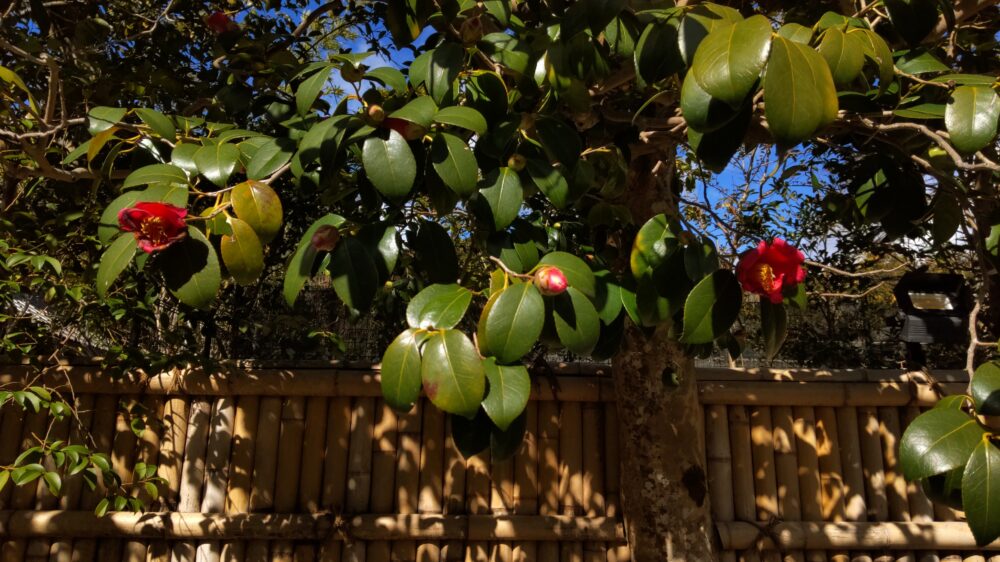
Even if the travel in winter season may not be your first choice, you’ll be surprised how beautiful winter flowers are. A long passageway, made of high hedges of evergreen plants, lead people into the Ginkaku-ji garden. The beautiful red Camellia flowers attract visiters.
How to avoid the crowds
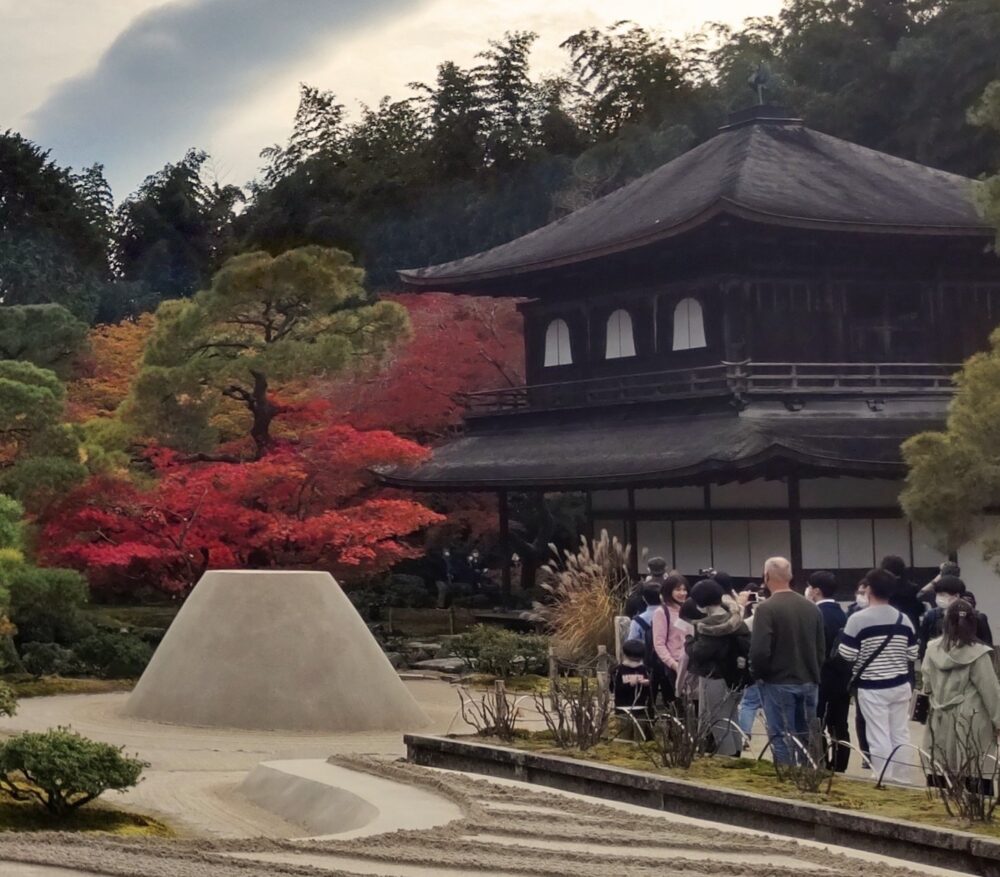
Ginkaku-ji is one of the popular temple in Kyoto city. In spring and fall season, it can be crowed with many tourists. However, a little planning ahead helps you to travel easily. Here is some advices to avoid crowds.
- The weekday travel is better than weekend.
- It’s a 30-minutes walk from The nearest station “Demachiyanagi” to Ginkaku-ji and there are some tourist attractions nearby.
- The cycling is also good for some reasons: the roads to Ginkaku-ji are well maintained, there are many rental bicycle stores and parking areas.
- The other option is to stay in hotels or inns near Ginkaku-ji temple
Information
Open hours
8:30 ~ 17:00(Summer : May.1 – Nov.30)
9:00 ~ 16:30(Winter : Dec.1 – Feb. 28)
Regular holiday
None
Admission
Adults: 500 yen
Elementary and junior high school students : 300 yen
Contact
075-771-5725(Japanese only)
Address
2 Ginakuji-cho, Sakyo-ku, Kyoto 606-8402 Japan
Flowers and seasons
※The time when the flowers bloom varies slightly depending on the year.
| Flower | Month | |
| Camellia | Mid February to Mid March | 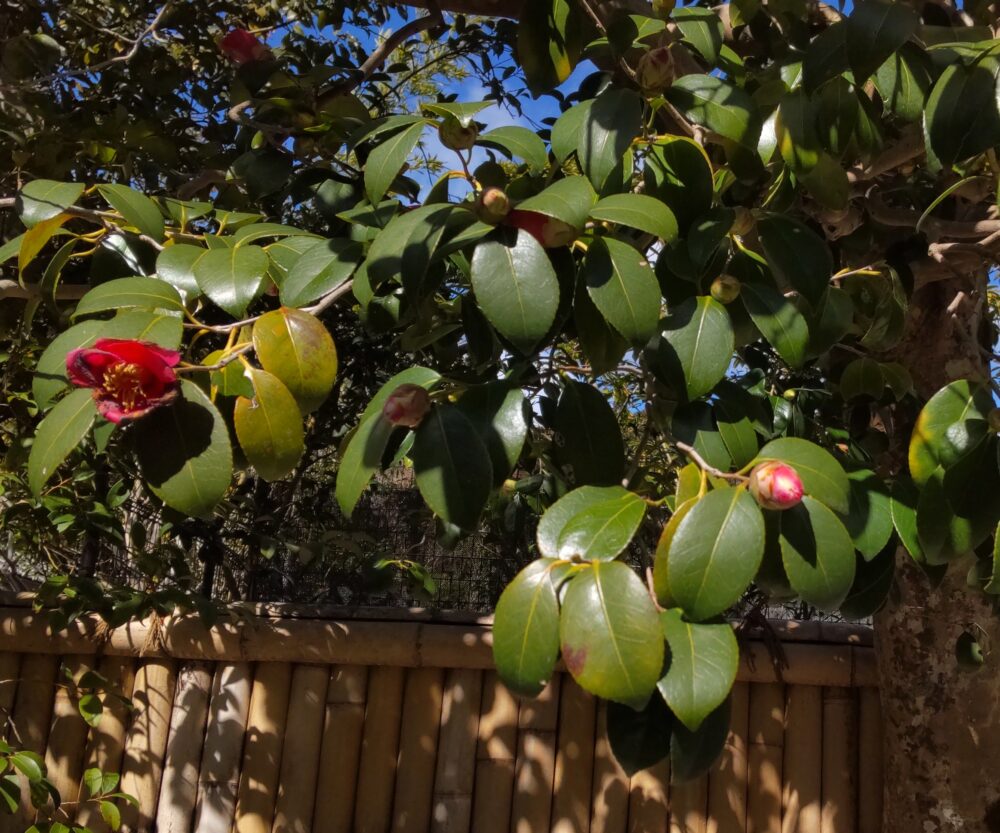 |
| Maule’s quince | Mid March to Early April | 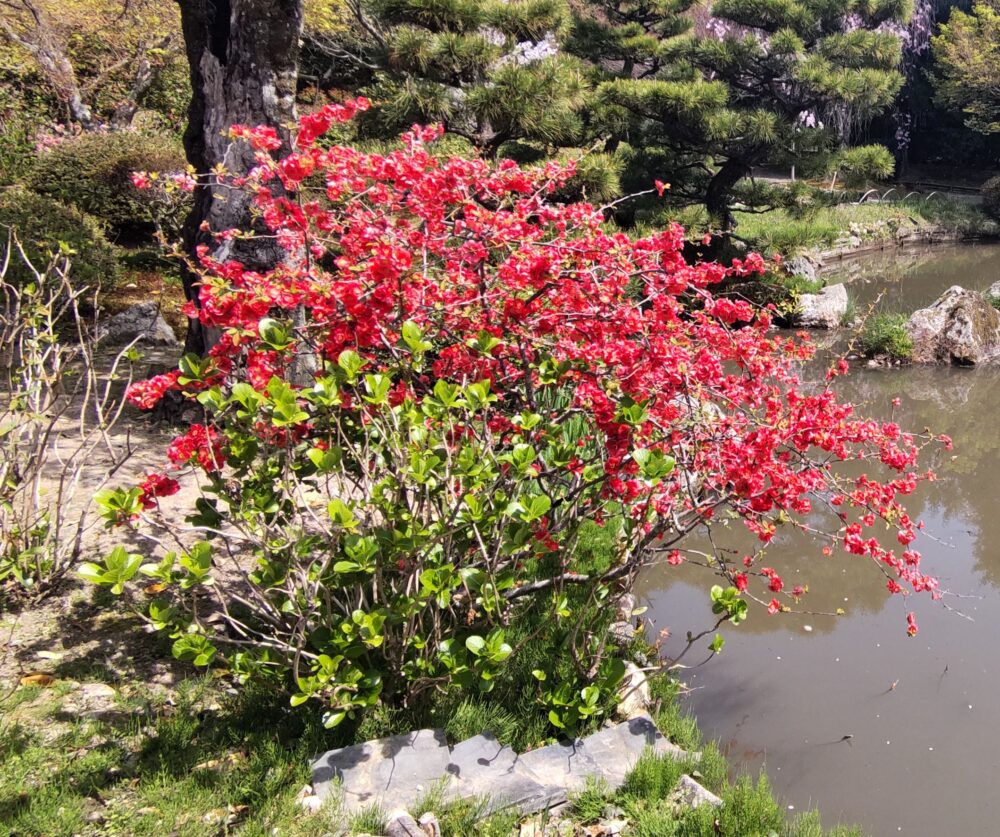 |
| Iris japonica | Early April to Mid April | 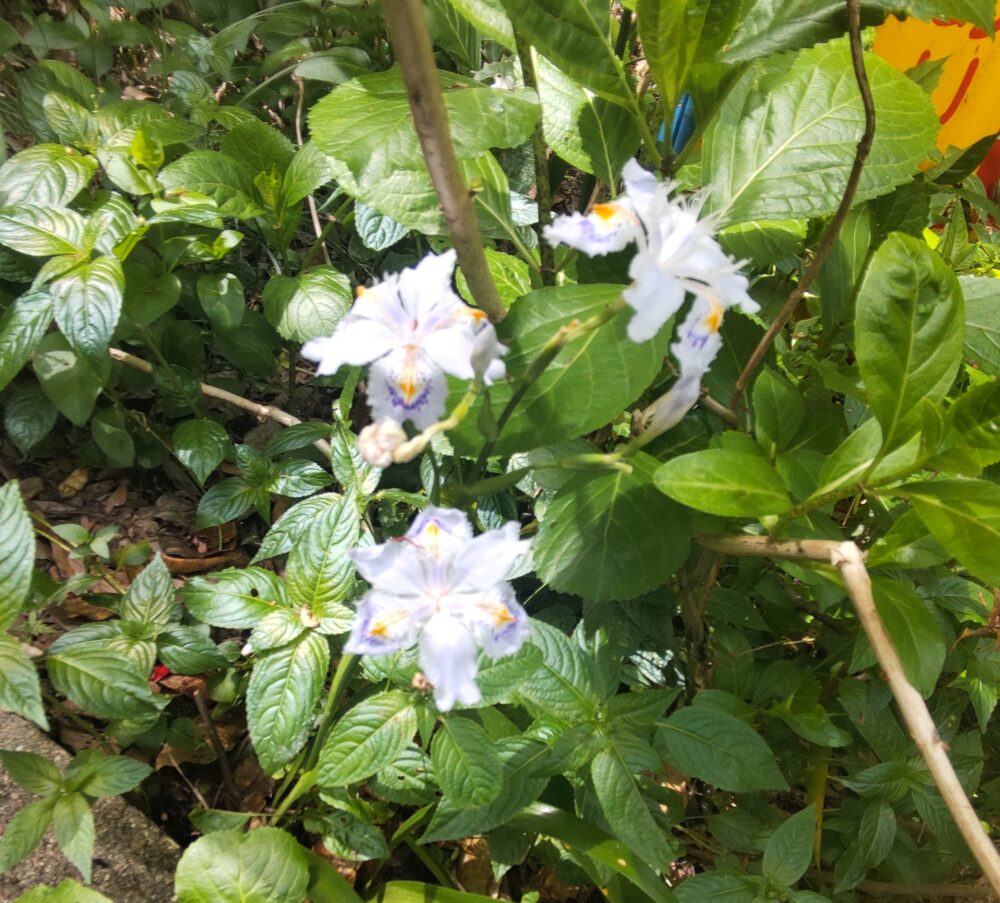 |
| Peonies | Mid April to Late April | 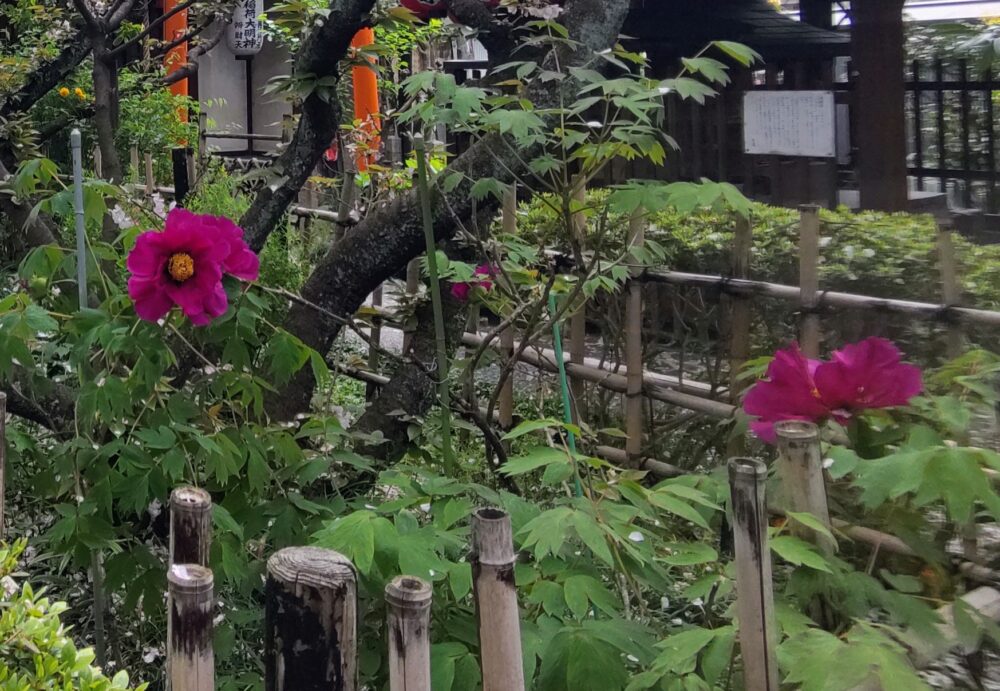 |
| Azalea | Mid April to Early May | 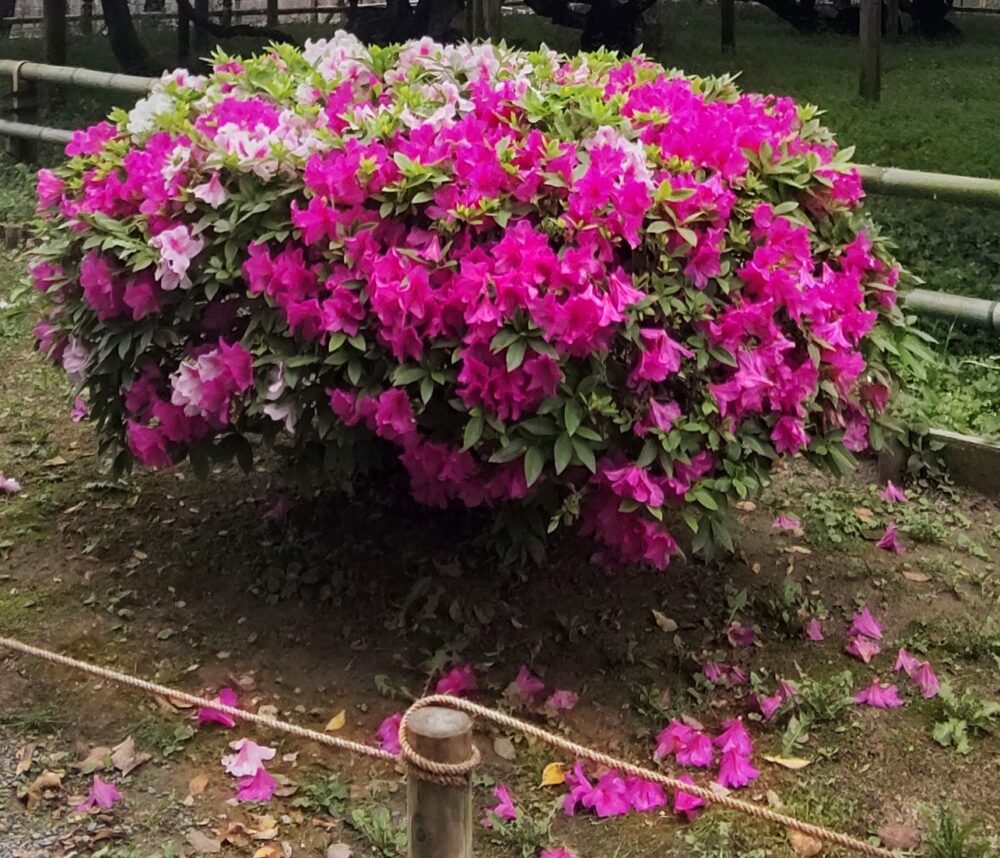 |
| Japanese maple tree in fall season | Mid November to Late November | 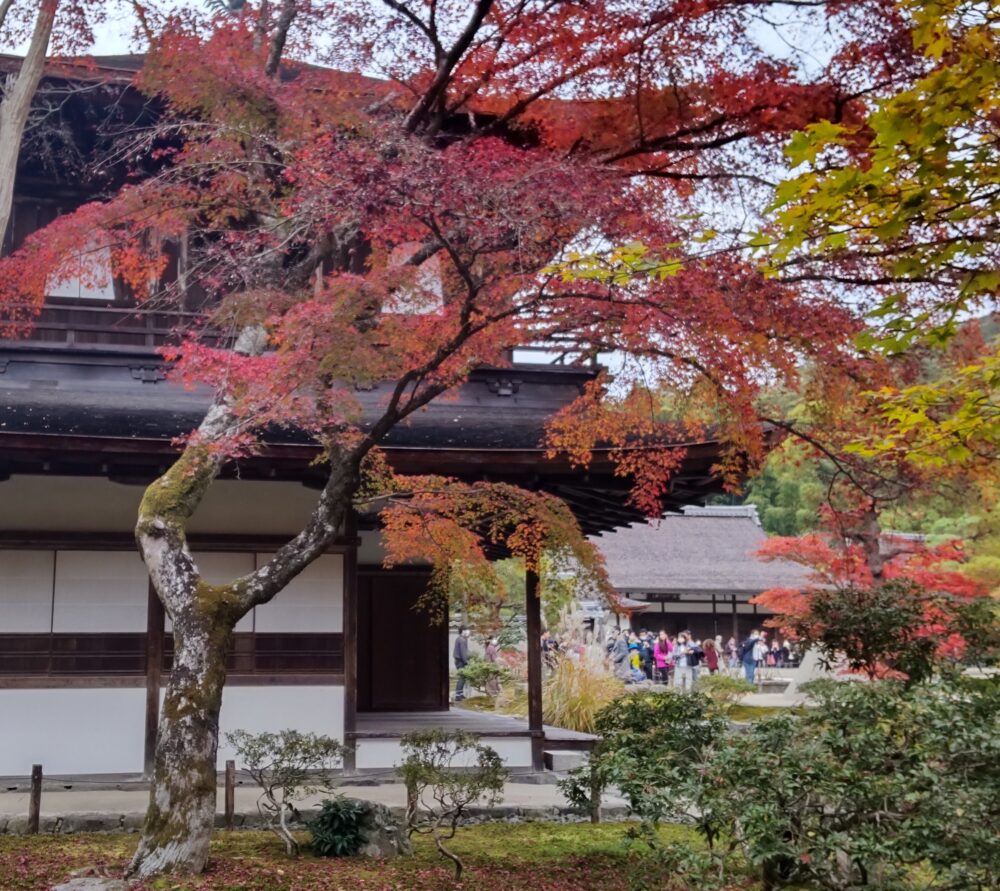 |
